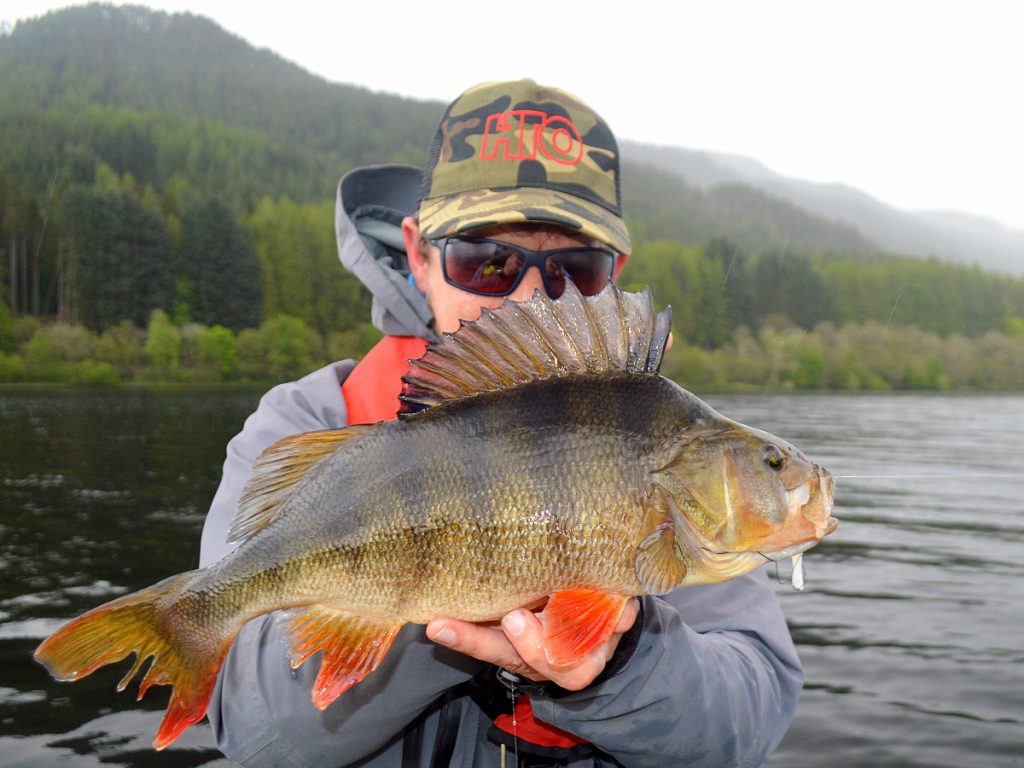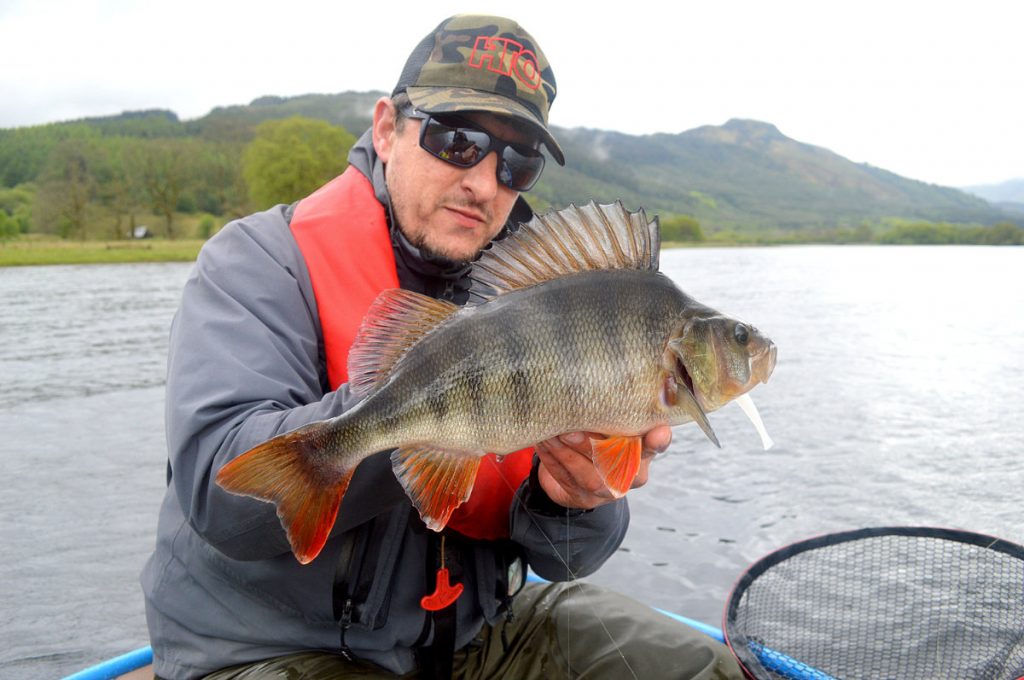Every year around Autumn, I come down with a seasonal dose of “Perch Fever”, a self-inflicted desire to chase and catch the stripey fighty denizens of the lochs. I will happily ignore big pike and brownies as I patrol the loch, glued to my small Lowrance fishfinder. I search drop-offs on the depth sounder looking for marks that hug the bottom on the inclines or marks on the bottom clustered underneath bait shoals. Nothing else matters apart from this mono species hunt, find the perch, catch the perch, rinse and repeat.
My fascination with perch ties into my love of LRF and ultralight lure fishing. Perch is one species that provides a great opportunity to catch a specimen on a lure rod. In particular, when balancing your tackle to deal with a fish that may reach a dream weight of 5lbs, then my ultralight / LRF tackle is tailor-made for the job in hand.
Balanced Tackle
Using balanced tackle against the fish allows me to work small lures super effectively. Using light breaking strain braid like a PE0.4 Light Game X4 Braid or the heavier PE0.8 Nebula X8 Braid allow me to feel even the subtlest bites. This sensitivity and ability to feel while working a lure subtly increases my chances of catching a specimen sized perch.
When it comes to hooking and playing the larger perch on ultralight / LRF gear, then the tackle works for you. The bigger loch perch fight hard. Diving, turning and snapping their heads from side to side in an attempt to throw the hook. When using braid with a heavier set-up, these snappy head shakes are good at throwing the hook, and it is harder to get that fighting curve in a stiffer, heavier rod without applying too much pressure on the hooks. An ultralight or LRF rod naturally bends more, so it is easy to apply enough power to put the rod into its fighting curve and still cushion that delicate hook hold.

The other major advantage when using this ultralight gear is that it takes a bit longer to get the perch in, not that you have to overplay the fish, but that it is a gentler, less frantic fight. This I find a major advantage when catching fish in 25-30ft of water, and it helps stop the fishes swim bladder from blowing up, causing it to be unable to dive when released. With heavier gear, you naturally have to apply more force to get the rod to bend, and by doing so, the fish travels up the water column sometimes faster than it can adapt to it, thus causing a blown swim bladder.
So, what makes a good perch rod?
My favourite rods for perch are based around a couple of features. Firstly, I like a fast actioned rod, this allows me to impart action to a lure simply by flicking a wrist. A fast-action also helps me react to bites with fast strikes, giving me good hook penetration. Although I do a lot of vertical fishing from the boat, I also often cast to structure or cover when perching. A faster-actioned rod gives me a bit more accuracy as a softer rod wobbles about a bit more after the cast and can throw the lure wide of the mark.
The rod has to be light enough for me to work all day, mostly single-handed. The other crucial factor is down to what method I intend to use against them. If my approach is with dropshot weights in the upper end of the rods range, then I prefer a tube tip rod. With the lower end of the range, then a solid tip would be my choice. Likewise, when using hard baits like mini cranks or metals, I much prefer a tube tip. However, when working very small lures, then the solid tip can help too.
The other issue is to do with feeling the bottom. In general, you will get more feeling from a tube tip rod than a solid tip. However, the solid tip gives you a much more visual element. For instance, when a fish bites, you will see it before you feel it. This also allows the fish to suck a lure in without feeling much resistance from the rod. This feature, especially when drop shotting, can lead to you being able to hit the most subtle of bites, some of which turn out to be from big fish.

Currently, I use a mixture of both these style of rods for my perching, depending on venue and intended weight range of lure. When fishing larger deeper waters like the lochs from the boat, I tend to drop shot using a weight of 7-10g. This is so I can effectively fish the bottom of the loch in 20 – 30ft of water. So, for that, I use the Tubular tipped HTO Aikido 1-11g as it gives me the perfect balance between weight range, ability to feel the loch bed and ability to give quick hook sets. I can also work small crankbaits and metals effectively with this rod.
Dropshotting
Ninety per cent of the time, when I am after big perch, I will be drop shotting. My rig is very straightforward. I use a 5-foot leader of Nebula FC fluorocarbon in 8lb. Then roughly 40 cm from the weight, I use a size 2 Sabpolo Wormer hook. These hooks have been my go-to for dropshotting for several years. They are great for nose hooking lures and are a fine gauge wire with brilliant hook penetration. I tie this with a Palomar and then clip the weight on. My go-to lure is the HTO Schlugg (also the HTO Midi Stick, this has been discontinued, but some shops do still have then), and this is the lure I catch the majority of my big loch perch on. Rigged on a dropshot rig and worked along the bottom with lots of pauses is a sure-fire way of tempting a big loch perch. It is a simple rig and a slow and low approach; it always seems to pay off for me.


